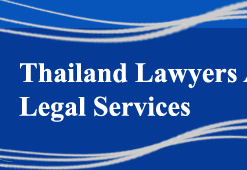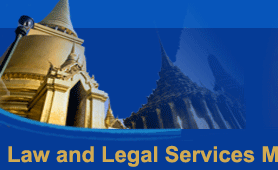



    |
|
| |
|
Framework Agreement on the ASEAN Investment Area (AIA)
Dr. Lawan Thanadsillapakul
The Third Pillar: the Liberalisation ProgramUnder the AIA, ASEAN agreed to promote itself as "a single investment region"(13) through joint investment promotion efforts, aiming at the full realisation of the ASEAN Investment Area. Under AIA, national treatment will be applied to both ASEAN investors and all other investors. ASEAN member countries hope that this will increase the confidence of investors in investing in the ASEAN region. The financial crisis(14) provided a further impetus for the move to liberalise the investment regime in the form of "bold measures".
The Sixth ASEAN Summit agreed to launch "Bold Measures" for speedy recovery from the crisis(15). These include the "Short Term Measures to enhance ASEAN Investment Climate" that accelerates the implementation of AIA(16). The short term practical measures cover the following areas(17): minimum three years corporate income tax exemption or a minimum 30% corporate investment tax allowance; 100% foreign equity ownership; duty-free imports of capital goods; domestic market access; minimum industrial and leasehold period of 30 years; employment of foreign personnel; and speedy customs clearance. All these measures are applicable to all investors(18).
The specific measures and privileges extended by ASEAN member countries provided in section 3 of the Short Term Measures are as follows:
Brunei will allow 100% foreign equity ownership in high-technology manufacturing and export-oriented industries. Laos allows duty exemption on imported capital goods required by the promoted investment projects; However, all privileges granted by ASEAN countries are subject to specific conditions: investors must meet the minimum investment level specified by the host country, if any; the industry must be in the published priority list for tax incentives to enjoy this particular privilege; the industry must not be in any negative list, if any; and the investor must show proof that foreign funds have been brought in for the entire amount of the investment, if required by the host country(19).
However, the AIA goes much further than these short term measures. It binds the member countries to eliminate investment barriers, liberalise investment rules and policies, grant national treatment and open up industries, initially in the manufacturing sector and later to cover other sectors under the agreement. Under the Framework Agreement on the AIA, national treatment will be made fully available within six months after the date of signing (7th October 1998) of the Agreement(20) for ASEAN investors(21) in the manufacturing sector, subject to certain exclusions(22). These exclusions will be progressively phased out(23) by the six ASEAN countries(24) by the year 2003 instead of waiting for 2010(25) as initially agreed. Myanmar will also join the six ASEAN countries to fully implement the obligation in 2003 instead of the year 2015. Vietnam and Laos will exert their best efforts to achieve the early realisation of AIA in 2010 instead of 2013 and 2015 respectively. The AIA aims to promote the freer flow of capital, skilled labour and professionals, and technology among the member countries.
In relation to the AICO Scheme, ASEAN countries agreed to waive the 30% national equity requirement under the AICO Scheme during the period 1999-2000 to respond to the AIA short term measures. Moreover, the AIA arrangement affirmed their commitment to the 1987 ASEAN Agreement for the Promotion and Protection of Investment and its 1996 Protocol to enhance investor confidence in investing in ASEAN. The AIA also facilitates the implementation of the ASEAN Free Trade Area towards the ultimate goal of sustaining economic growth and development in all members, which would be a crucial turning point for ASEAN.
The AIA is a step forward to a higher level of regional integration. However, since ASEAN member countries are members of GATT/WTO, it poses the question about its generalised liberalisation commitment to other countries, or in other words how ASEAN balances its intra-regional integration with global liberalisation. In AIA, the investment liberalisation scheme combines the strengthening of regional integration by intra-ASEAN investment liberalisation with generalised liberalisation by gradually opening up ASEAN investment to all investors. This will be discussed in the next section, which focuses on the legal aspects of the AIA Agreement and its implementation.
_______________________________________________________________
(13) Joint Press Statement of the ASEAN Heads of Investment Agencies Meeting, Manila, Philippines, 3rd-4th July 1997, Paragraph 7.
(14) The Heads of Investment Agencies have noted that foreign direct investment and intra-ASEAN investment flows have declined dramatically since the beginning of the crisis. In this regard, they agreed that there is a need to take collective actions and measures in addition to those taken in the individual member countries. They called on the various private sector organizations in ASEAN to provide suggestions on meaningful, immediate and specific measures that will help in the economic recovery process. See Joint Press Statement of the Meeting of the Fourth ASEAN Heads of Investment Agencies, 24th July 1998, Singapore, Paragraph 3.
(15) Statement on Bold Measures paragraph 1. provided that "1. The financial and economic crisis has severely affected the ASEAN economies and business dynamism in the region. In order to regain business confidence, enhance economic recovery and promote growth, the ASEAN Leaders are committed to the realization of the ASEAN Free Trade Area (AFTA). In addition, the Leaders agreed on special incentives and privileges to attract foreign direct investment into the region. To enhance further economic integration of the region, the Leaders also agreed to further liberalize trade in services". The special incentives and privileges are provided in the "Short Term Measures to enhance ASEAN Investment Climate".
(16) These "short-term measures" are applicable to all applications received from 1st January 1999 to 31st December 2000, and those approved thereafter. Each ASEAN country has agreed to extend additional special privileges to qualified ASEAN and non-ASEAN investors in the manufacturing sector. The "Short Term Measures" were agreed as part of "the ASEAN Investment Bold Measures" agreed upon by the ASEAN Leaders at the Sixth ASEAN Summit in Hanoi on 16th December 1998.
(17) Section 1: Privilege Granted to new Investments/Projects or Expansion of Existing Investment Operations of the "Short-term Measures to Enhance ASEAN Investment Climate", Annex to the Statement on Bold Measures, agreed upon by the ASEAN Leaders at the Sixth ASEAN Summit in Hanoi, in December 1998.
(18) Joint Press Statement, First Meeting of the ASEAN Investment Area (AIA) Council, 5th March 1999, Phuket, Thailand. The statement declared that "all ASEAN countries are implementing the "bold measures" agreed upon by the ASEAN Leaders at the Sixth ASEAN Summit in Hanoi in December 1998. The privileges cover manufacturing investment applications received and approved by the respective ASEAN investment agencies in 1999 and 2000. The privileges under the "bold measures" are to be extended to all investors, ASEAN and non-ASEAN. The Council encouraged investors to take full advantage of the investment privileges offered under the bold measures during the promotion period.
(19) Section 4: "Conditions" of the Short Term Measures to Enhance ASEAN Investment Climate.
(20) Initially, Art. 4 of the AIA agreement provided that national treatment is extended to ASEAN investors by 2010 but the "Bold Measures" agreed upon by the ASEAN Leaders at the sixth ASEAN Summit in December 1998 accelerated the time frame from 2010 to within 6 months after the date of signing the agreement or the date the agreement enters into force. Art. 21 of the Framework Agreement on AIA provided that "This Agreement shall enter into force upon the deposit of instruments of ratification or acceptance by all signatory governments with the Secretary-General of ASEAN. The signatory governments undertake to deposit their instruments of ratification or acceptance within 6 months after the date of signing of this agreement. This means national treatment extended to ASEAN investors is fully implemented immediately when the agreement enters into force, but subject to the exception provided for under the agreement.
(21) In defining an ASEAN investor, a liberal definition has been adopted: an ASEAN investor is defined as equal to a national investor in accordance with the equity condition requirement of the respective host member countries.
(22) The Council tasked the Coordinating Committee on Investment (CCI) to begin work on AIA, especially on the submission of the Temporary Exclusion List and Sensitive List for opening up of sectors for investment and the granting of National Treatment. The initial package of TEL and SL were be submitted within six months after the signing of the AIA Agreement for opening up investment in manufacturing sector for ASEAN investors. The other sectors would be gradually open and all industries would be opened by the year 2003 for ASEAN investors and by the year 2010 for all investors. Therefore, even though AIA provided for the opening up of all industries for investment to ASEAN investors by 2003 (initially 2010) and to all investors by 2010 (initially 2020), they are subject to the Temporary Exclusion Lists (TEL) and Sensitive List (SL).
(23) The implementation of the Framework Agreement will be reviewed every two years to ensure that the objectives of the AIA are met.
(24) Brunei, Indonesia, Malaysia, Philippines, Singapore, and Thailand.